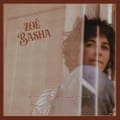Neneh Cherry, singer, writer, is sipping tea and talking about a party back in the day. “I keep thinking about it,” she says. “It was the first party I brought Naima to. I was 18, Naima was a baby, so it was in the early 80s. The party was at Jeannette Lee’s house. We had a white sling for Naima, and we were at the party, and Gareth Sager was going out with Jeannette. Anyway, Jeannette said: ‘Oh, can I take Naima in the sling?’ I was like: ‘God, yes, great. I can let my hair down for a minute.’ And there was a piano there, and Mark Springer was playing the piano, and Naima was fine, she was sleeping. We were all there. Together. I’ve been thinking about it maybe because Tyson, my daughter, has had a child, and she just took her to a festival, We Out Here… Anyway, that party, I feel like things came from there. That centre. When other things happened, different successes, that was always there first.”
What Cherry is talking about is family. Family through blood, family through friendship, family through music. A quick recap of the characters mentioned reveals the connections: Lee was in Public Image Ltd and now co-owns Rough Trade Records; Sager was in Rip Rig + Panic with Cherry, as was Springer. Naima and Tyson (and Cherry’s other daughter, Mabel) are musicians and singers. And Cherry’s wonderful new memoir, A Thousand Threads, is a personal history that has such connections woven all the way through. If you were to draw Cherry’s family tree, it would be a complicated picture, and, for her, would include long-term friends so close that they are a part of her clan.
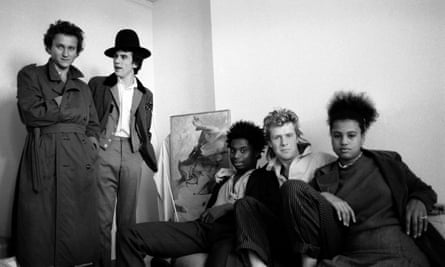
“My whole life is interconnected, intergenerational and cross-country,” she says. “It goes through fields and through cities. I have Sweden, I have New York, Spain, I have my life here. But there’s also the interconnection of life and family. I’ve realised, more and more, how deep those things are interwoven, and how far back those threads stretch. That’s why I called the book A Thousand Threads.”
Though Cherry is perhaps best known for her excellent 1988 pop debut, the half-sung half-rapped Buffalo Stance, which she performed on Top of the Pops while pregnant with Tyson, her artistic life – her life full-stop – is less conventional than your everyday pop person. She is not your usual singer. She started performing in the late 1970s, providing backing vocals for all-female punk band the Slits, before becoming a frontperson with post-punk group Rip Rig + Panic, then a born-to-do-this, all-the-medals pop star. (The first time I interviewed her was in the late 80s, for the cover of Smash Hits magazine.)
Since then, she has moved freely through hip-hop, free jazz, R&B, electronica, trip-hop and dub, while collaborating with interesting people from Michael Stipe to Tricky to Four Tet. Now 60, her most recent album, 2022’s The Versions, featured artists such as Anohni, Sia, Robyn and Tyson, alongside Cherry herself, on new interpretations of songs from her back catalogue. It comprises just 10 tracks, including two versions of both Manchild and Buddy X, though there were far more to choose from.
As the book makes clear, Cherry’s artistic life is wide and wild, and much more experimental than the pop-facing Buffalo Stance. “Maybe that’s why, at that time, it wasn’t that I felt like I was in the wrong place, but quite often I felt much weirder than the environment that I was in,” she says. “Not weirder as in, ‘I’m a strange person’, but the environment could feel quite strict and it would make me feel weird.”
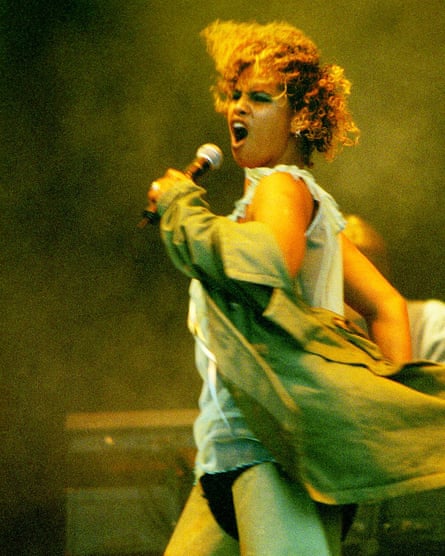
Her mother, Moki Karlsson, was a Swedish artist; her father, Ahmadu Jah, a Sierra Leonean composer, percussionist and lecturer; and her stepfather, Don Cherry, an American jazz trumpet player. Neneh grew up with Moki and Don, who believed that their home should be a centre of creativity of all kinds. They had “a mission to bring music, art and communion into everyday life, not just for our family but for everyone”, writes Cherry. So Moki would paint every surface of wherever they were living, sew clothes and tapestries and costumes. Don would bring musician friends to play. They staged art shows and music events and workshops at their home and in schools, museums and clubs; art and music were an integral part of their family life.
Don and Moki’s work meant that they, Neneh, and her brother Eagle-Eye moved around a lot, from Tågarp and Stockholm in Sweden to Vermont and New York in the US (they lived in the Chelsea hotel; later in a Long Island City warehouse that also housed Chris Frantz and Tina Weymouth of Talking Heads). Neneh decided to move to London when she was 15, and formed an intense friendship with Ari Up of the Slits (“we were like sisters… like two old souls reunited”), and with Andi Oliver (“Andi is of my soul”), now a chef and TV presenter, but who then sang with Cherry in Rip Rig + Panic. She also made friends with musician Cameron McVey, who became her husband; Massive Attack (who’ve said that their album Blue Lines only happened because Cherry “kicked our asses” and let them make it in her house); stylists Ray Petri and Judy Blame, and many others. Her book is a living testament to artistic invention and the people who are driven by it. “A lot of musicians love their instruments like their kids,” she says. “It’s a devotion, and of course you want to make a living out of it. But that’s not why you’re doing it. You’re going to do it anyway. It’s there, it’s a life force.”
No wonder Cherry attracts all these people: she is delightful company. We are in a chi-chi bar-restaurant, and the waiter is clearly charmed by her, hovering in case she might want something more than a cup of tea. Warm and interested, thoughtful and a little less confident than you might imagine, Cherry admits that music is her thing, rather than words. You can hear it in the way she speaks: her sentences loop and swirl in long musical phrases; she likes a to-and-fro, call-and-response. “I prefer a conversation where you can go, ‘Do you know what I mean?’, so we help each other say the things that we’re trying to express,” she says. “When you’re writing, when you try to express something that you think or feel on your own, it’s hard. It’s really hard pinning it down.”
But she managed it. A Thousand Threads took her four years to complete and it’s a vibrant read, peppered with both delight and moments of darkness, including the Aids crisis, her parents’ deaths, her own recent struggles with alcohol (“it got really dark and heavy, you feel a lot of shame”) and how she was raped when she was 16. “I find that I can see it from the outside, like it happened to someone else,” she says. “But I know it’s in there. Sometimes I wish that I could just sit and just cry it out. It’s like it’s a plate in the Earth, a tectonic plate. And unlodging the place where I put it, and actually reaching that pain is almost impossible.”
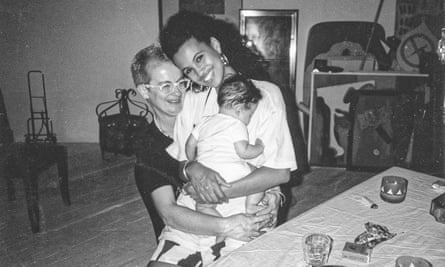
There’s a wonderfully upbeat creative domesticity in the book, too, a sense of motherhood and family. “Writing lyrics and holding a child and turning the chicken, it’s all part of the same thing,” she says. “And it’s not always easy. Being someone’s mother, it’s not easy. The love and the overpowering responsibility and the fear, we could unpeel so many things. It’s not easy, and it’s not supposed to be easy.”
Perhaps that’s why she keeps coming back to the party, she thinks. The mix of creativity and domesticity and the driving force of “fuck this shit, we’re going to do it”, as she puts it: “Fighting through the world and all the obstacles that come at us, and remaining devoted to those ideas, your principles. And, you know, having a great party, too. That is very important.”
How does she feel about answering our readers’ and fans’ questions? “I’m happy to,” she says. “Honoured, actually. I’m not hiding, I’m in a place where I’m happy to talk. It’s like I just said, I like the conversation.”
So let’s getting going…

Molly Manning Walker
Film director
Is there a moment in your life that you would like to take someone back to witness? And who would you take and why?
That’s a complicated one. I think I would take Tyson, Mabel and Naima [Neneh’s children] and go with Ari [Up] from the Slits up the stairs into [Streatham club] Bali Hai, with Jah Shaka playing in there. I’d get off the 137 bus, go in there and just feel that universe. Coming up the stairs, hearing that bass, and watching the kids, and dancing. Yes, I’d like to do that with them.

Femi Koleoso
Musician, Ezra Collective
Auntie Neneh, first, I just love you so much. I recently spent your birthday with you, dancing and celebrating. You danced all night. You outlasted me. Please tell me what the secret is so I can be dancing hard when I reach your age. I need recipes, routines and rest techniques.
I love you too! But do you know what, Femi? You know exactly what it is, because you talk about it when you’re playing music on stage. And every time I’ve heard you say this, it just made me go, “That’s it!” It’s joy. Femi talks about joy in such an amazing way. He says: “It’s not about complete happiness, or that we can be completely blissed out. Life is hard, we go through ups and downs, but throughout whatever is happening around us in the world, we can still feel joy, and the power of joy in the moment is medicinal.”
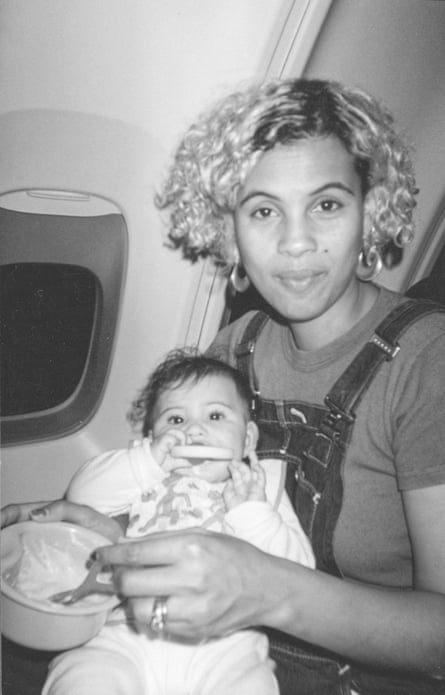
Miranda Sawyer: And that joy was there for your birthday?
Yes! It was amazing. Andi [Oliver] threw me a party with Garfield, her partner, at their house. I said: “Look, I just want it to be like a shebeen, like an old-school house party.” And Andi and her posse cooked, and it was incredible. Walking in the door, it smelled of food, and sounds were playing. Dennis Bovell DJed for a bit. Tessa Pollitt, my sister from the Slits, DJed, and my grandson, my nephew. It was really a proper family party. So many good tunes, but right at the end of the evening we played Mabel’s track, Vitamins, and it was just me and the kids, about three in the morning, and Andi came in, and we all had a little rub-a-dub. And it was just lovely. That was dope.
What do you think is great about the music industry now, and what hasn’t changed for the good since you first burst on to the scene?
Tony B, Manchester
What’s hard is actually making a living. People are streaming and artists aren’t getting paid enough for the streams. But what’s great is the fact that we all have access to getting our music out, whether it’s via SoundCloud or just putting things up on the internet. Because before, OK yes, there were independent labels, but a lot of the time people were still dependent on some guy sitting behind a desk listening to your demos, and he’d have, like, 250 demos on his desk already. So I think that is really great, but making an actual living out of it is hard. You’ve got to hit the road and tour, and since Brexit, that’s another whole fuck up, because getting out into Europe with [customs] carnets now, it’s really expensive.

Michael Stipe
Lead singer, REM
Can you speak about your mother’s influence on you as an artist, as a mother and as a public figure?
The influence on me is in everything that I do, Michael. I feel it every day. And what Moki’s vision has given me is the insight that creativity is in everything, even when you think that it’s not there: it’s in the air, in the way that we approach things, the sounds, people, cars, everything. Cooking something, reading something. That is what comes back to me when I sit down to maybe write a song, and I think that’s so connected to my mother. Moki saw that. She knew that, she understood that.
What did your family think of you moving to another country at 15 to live independently? How did you make a living?
Jennifer, Finland
The first job I had in London was in a place called Better Badges making pin badges and fanzines. And then quite soon after that I was very blessed, because I joined first the Slits, then Rip Rig + Panic, and I guess I must have made enough money to survive. And then I started DJing a bit, and we’d walk out with £40, or £20.
As far as my parents went, of course, it must have been quite a thing for them to have a child that age, go to live in London. But somehow, they also felt that it was good, and I think they were happy that I was going to a place where I was more likely to find what I was looking for than in some crazy high school in Sweden. And they’d also met some of the people that I was with, because my dad had toured with the Slits, so they knew that I was OK. I was lucky, because I obviously thought I was more grown up than I was, but we were all trying to take care of one another, and I was in a family environment, with friends. Me and Andi were cooking food for lots of people. My parents knew that it was the best place for me to be, even though I’m sure they were worried.
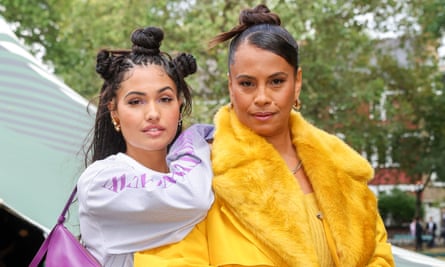

Sadiq Khan
London mayor
You lived in London as a teenager. How did it influence you?
That’s a hard one… Even though there were some really heavy things going on – there were skinheads on the tube sometimes – I think I found a freedom that spanned culturally through different things and different communities. The people that I connected to, we moved through different places quite freely. The music but also the clubs: we would move from the sound system culture into what we were doing, and also go out in the West End… As a young person, it was that thing of, yes, you can come into all these spaces, as long as you hold your own. I would say that the multicultural aspect that makes London a great place gave us – myself and my tribe of people – the freedom to begin to be who we thought we could be.
Surviving in London in those days was possible, because we lived in squats, and you could go to all the markets for food. Portobello Market was a food market, and you could buy things for a fiver. You could exist. My heart breaks for the younger generations because these kind of places that are the heartbeats of our communities are vanishing. It’s not that easy to just find a normal pub any more.
You’ve worked with many artists over the years. What makes for a good collaboration? And who else, alive or dead, would you have liked to work with?
Michael Moloney, Edinburgh
Good collaboration is just going into a room and making a connection, but also feeling safe. It’s really weird sometimes, you can be with someone and you feel a bit uneasy that they might think you’re much cooler or better than you feel… so it’s [about] finding a place where you’re inspiring each other, and where you let that person push you somewhere that you wouldn’t go on your own. But there has to be a chemistry. Who would I like to work with? I mean, Dr Dre.


Jazzie B
Musician
I remember when you won a Brit, you broke your award in half and you gave me the head. I’ll always remember that. We have it as the toilet chain, the bit that you pull to flush. What did you do with the other half?
Do you know what? It got lost somewhere. I was wondering where it might have ended up. I know that Judy Blame had the other Brit, and I don’t know where that is either. But bless you. I’m happy to know that it’s in your toilet. I love it! I always kept my awards in the toilet.
Rip Rig + Panic were fantastic. So original and inspiring to me. How do you relate to them and their output today?
Stephanie Vuelleumier, France
They were great and I’m thankful to have been a part of it, because it was the best foundation. It was really good. It was also really shit. But the point wasn’t about seamless perfection. It was about doing it and saying it, and we did that.

Questlove
Musician, the Roots
Have you and “Buddy X” repaired your friendship? [The song Buddy X, from the album Homebrew, berates a family man for playing around.]
As far as I’m concerned, I think so. I saw him recently – maybe two years ago, that’s recent these days – and yes, I think we’re cool. It’s someone I know who’s quite famous, and his nickname for checking into hotel rooms was Buddy X. At the time, I disagreed with some of his extracurricular activities. So I wrote the song, and obviously he knew, because it was his personal, private name. There was some tongue-in-cheek, it wasn’t coming from a hateful place. But we’re cool.

Anohni
Musician
Where do you go when you need to escape? What is your safe place?
On my bed. I like a good bed. I like a cup of tea by the bedside. And my iPad. Sometimes I just watch absolute shit. I’ve gone into one of my really lowest levels watching something called Fire Country. It’s an American firefighting drama. They put fires out in northern California.
I also love to go walking in New York. Or being at my house in Sweden, and going into the woods, or listening to records, pulling out my old vinyl. But then there’s the iPad and Fire Country…
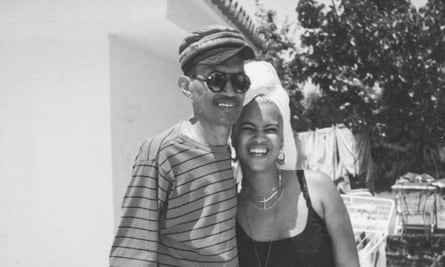
How was Don Cherry an influence in your life, both as a father and musician? I met him once after an amazing concert, and he seemed such a sweet and spiritual person.
Fisher, Italy
Buy the book, there’s lots in there! It’s quite a big question and I’ll try to answer it with a small answer, but I just feel him with me – his vision and mentality, and the way he was in his life, and music that he made, which was this continuous thing that was always growing and going somewhere. I hope that I have that with me. You know, I feel so unfinished still. And I feel that’s very connected, in a way, to him.

Chris Frantz
Drummer, Talking Heads
I have wonderful memories of your family living in the loft upstairs from Tina and me in Long Island City, New York. I hope our band rehearsals were not too loud. What is one of your favourite memories from that amazing time?
Oh my God. The memories from Long Island City from that era are amazing. It was never too loud! The memory of you guys rehearsing downstairs and the whole building vibrating… There’s something about you and Tina [Weymouth, co-founder of Talking Heads], especially the bass and drums, and you guys playing Psycho Killer, that just sits in my bones in a really special place. For me and Eagle-Eye at that time, what was really amazing was how the doors were open and we just used to go between the lofts. We’d come downstairs, we’d hang out there, we’d go over to Ernie’s [Ernie Brooks, former bass player of the Modern Lovers]. It was just its own little amazing universe, that whole era. The rhythm of the whole building shaking still sits in my body, and I feel like I’ve carried it with me in everything that I do.

Kim Jones
Fashion designer
What would you describe style as, to today’s generation?
Style reflects who we are and how we bring life to the things we wear on our bodies every day. It’s timeless, it’s unique and ultimately it’s the purest form of self expression.
Can you tell me how you got to record a Peel session with Nico? I think it was Pullover No Socks in 1981.
Alan, Barcelona
Yes. It was a John Peel Rip Rig + Panic session with me and [RR+P founder member] Gareth Sager. Gareth was hanging out a lot with Nico. Actually, I don’t know that I’m on that session so much; I might sing a bit, but it was right in the beginning when I had only just joined [the band]. Nico made this really crazy, very eerie track. I remember her being around. Gareth and Mark Springer [also in RR+P] found her somewhere, at someone’s house, and she was living in Brixton for a bit, so we were just hanging around and hence the session.

Wolfgang Tillmans
Artist
I learned about your mother Moki’s art in last year’s ICA retrospective of her work. She had a strong style and visual language. What did she make of you developing your own visual language, accompanying your music with the likes of Judy Blame in London?
It’s interesting, isn’t it, with parents. I can see who my children are and understand their capacity. And I think my parents had that, they could see what I was capable of, and their thing was waiting for me to find that space where I could start to speak in the language that I’d always had going on inside of me. It’s a place where you are visually creating things to fit with the sound, or whatever it is that you’re doing. And then finding the right tools, the right way, to express what needs to be said, that harmonises with them. Sometimes you have a specific idea, sometimes it’s something that happens, just because you’re leaving space for it to happen. It’s a kind of playfulness that takes hard work. My mother came from a more avant garde perspective. So even when it was quite stylised, she was daring to mix things up and to not just do the obvious thing.
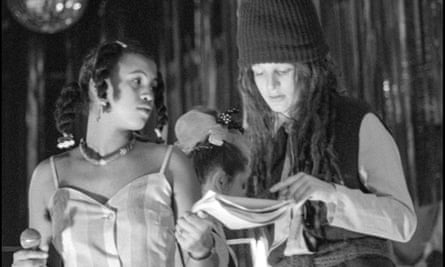

Bernardine Evaristo
Author
You became very famous when very young. Is there a difference between how people expect you to be when they first meet you and how you actually are as a person?
I’ve always found that quite terrifying. There’s a duality where you might start thinking: “Oh my God, am I a disappointment to this person?” My revolution was to actually bring all of whatever it is that I am, all my shit, with me. Otherwise you start to be cornered by your own headspace – that you need to be like the pictures of you, when it’s much more of a messy reality. I always wanted to not be intimidated. I always fought against that. Sometimes, I get recognised on the street and people are going, “Is it her?” Almost like you’re not there. I can hear you! I can fucking hear you!
Your 1990 cover of Cole Porter’s I’ve Got You Under My Skin edited the original lyric to include a rap about Aids. Did you receive any pushback for dramatically reworking a standard?
Scott McLennan, Campbeltown, Australia
It was for [compilation album] Red Hot + Blue. It was an HIV and Aids awareness project, and we fought to get that song, because just the title lent itself so well: you could actually really say what it was for, and what it was about. [Afrika] Baby Bam from the Jungle Brothers produced the track with Cameron and wrote the rap. I’m sure someone pushed back. There’s always someone who has an attitude or thinks that you shouldn’t be doing it.
MS: I don’t remember a push back – I remember that album being celebrated.
It also happened at a time when it needed to be said. The whole album needed to be beautiful, and the song and the visuals were allowed to be beautiful and gracious, but with an undertone of truth. There was pain, but we all needed to do something so badly because everyone was hurting so much, and some were hurt so much that they were gone.

Sally El Hosaini
Film director
What do you think is the most important message or theme that you try to convey for your music? And what advice would you give to aspiring artists who are trying to find their sound and style in the music industry?
I think those two questions connect. It sounds very hippy but it’s just… be who you are. Even if you’re doing something that’s very cut, trimmed and manipulated, you still have to put your heart in it. That’s the ingredient that brings something to life. Do it like you mean it. Also creativity, making music, whatever it is you’re setting out to do, it’s not about doing everything seamlessly and perfectly. You can be like: “OK, so that didn’t work, move on to the next.” Don’t go: “That wasn’t very successful. Well, that’s it. I better go away and be disappointed and figure out how to have a comeback.” No. It’s all part of the same thing, you have to keep moving through and tell your truth. Even if you’re singing a song about a pack of lies.
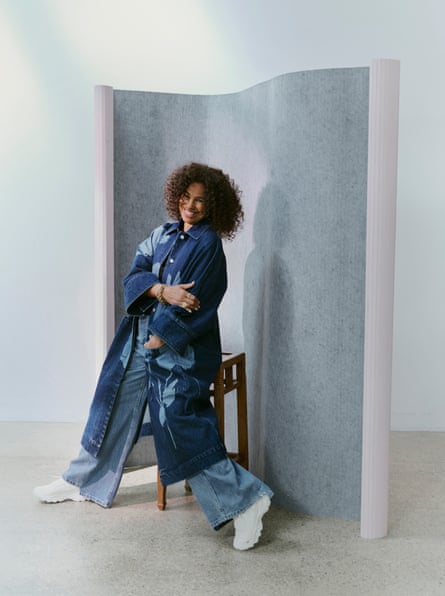
Is it true you were on the coast of India during the tsunami in 2004 and escaped in the back of a pickup truck? A friend said you were in the same truck as them.
Liss, Australia
It’s true! That’s crazy. Say hi to that mate. That was really terrifying. We were sitting in a restaurant: me, Cameron, Eagle-Eye, his girlfriend, our kids. We got there that night, and we were getting texts from people all over the place. There was the tsunami in Thailand and Miquita [Oliver, Andi’s daughter] was actually there. A terrifying experience. Anyway, with us, all of a sudden all the boats came into the restaurant. The tide was so high. I just got up and ran with my kids – Mabel was about seven or eight. We just went inland. We ran past huts, everyone started running. Eagle-Eye and his girlfriend were like: “We have to go upstairs and get our passports.” I was: “I love you. I’ll see you later.” I’m taking my kids… I don’t need my passport. So we lost one another for a while. We ended up getting on the back of a truck – me and Cameron and Tyson and Mabel – and they drove us up as high as we could go there. We stayed in a sandalwood factory that night. The guys who ran it were so sweet. They gave us their beds. That was our first night in Goa!

Andi Oliver
Chef and broadcaster
What are your top three tunes to drop on a party to blow up the dancefloor, and what are your top three books to keep your heart happy?
Oh, God, good questions. Books, I’d say Isabel Allende, Eva Luna. When I read it, I was like: “Oh, wow, this is so crazy.” I loved Where the Crawdads Sing [by Delia Owens]. The Ghanaian family saga Homegoing by Yaa Gyasi is really good. Tunes, I would play Lil Wayne’s A Milli and Baby Cham’s Ghetto Story. And we need a woman now, I think. Maybe I’ll just play Missy Elliott, Get Ur Freak On.
I would love to know about that most mysterious video by the Slits, Earthbeat, that you appeared in. It really spoke to me. It would make my 58th year to find out more about the filming, and all, of that video…
Fiona Symes, Brighton
Well, it was made in Wales, where we were – the Slits, but I was also there with Bruce Smith. They were writing in a live-in studio that I think was owned by one of the guys that used to be in Hawkwind, in the middle of nowhere. And a film-maker called Mick Calvert came up to make a video for the song using the landscape around where we were staying – mountainous, beautiful Wales. I think I played a mysterious woods person dancing with a head tie, and Tessa, Ari and Viv [Albertine] were riding horses. It was reminiscent of a kung fu film. But yes, the fabulous Mick Calvert directed it.
Who’s looking good today?
Jas, Dublin
Well, hopefully you. Yes, you are. You look good, my friend, my buddy.
-
A Thousand Threads by Neneh Cherry is published by Fern Press on 3 October (£25). To support the Guardian and Observer order your copy at guardianbookshop.com. Delivery charges may apply
Source: theguardian.com


